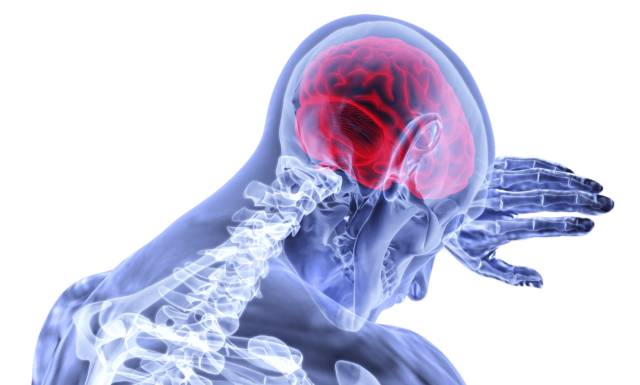
The brain is the boss of the human body. Why do we say that? Well, your brain controls every mechanism happening inside your body. It is essentially a part of the more extensive nervous system; other parts of your nervous system are a massive network of nerves, neurons, and your spinal cord. The nervous system controls everything in the body, right from your senses to all body functions.
Even the most minute disturbance or damage in the brain could have a significant impact on a person’s life and functionalities like memory, consciousness, and behavior.
Brain injuries
Head injuries that happen because of blunt force trauma are often the leading cause of brain injuries. Damage to brain tissue, neurons, and nerves could affect the brain’s processes to interact with the rest of your body. Different kinds of brain injuries could be.

- hematomas,
- blood coagulation,
- brain bruising,
- cerebral swelling,
- cracks and concussions.
Symptoms:

- vomiting within 24 hours for the injury,
- queasiness,
- slurry speech,
- bleeding from the ear,
- numbness,
- paralysis,
- permanent or temporary amnesia,
- inability to concentrate.
According to the Australian Bureau of Statistics, over 700,000 Australians have a brain injury, with daily “activity limitations” and “participation restrictions.”
Diagnosis
Traumatic brain injuries are mostly diagnosed with the help of the following tests
- Glasgow Coma Scale- This a primary assessment is done to see the patient’s consciousness post the impact caused by the injury.
- Computerized Tomography (CT) scan- A series of X-rays that helps to generate a detailed view of the brain to detect brain hemorrhage, hematomas, contusions, and inflammation.
- Magnetic resonance imaging (MRI) – Powerful radio waves that create a detailed view of the brain. Visit website to know more about this technology.
- Intracranial pressure monitoring is deployed to see the extent of tissue swelling.
Treatment
Depending on the nature of brain injury, treatments may include:
- observation,
- medication,
- rehabilitation,
- or brain surgery.
Brain tumors:
Brain tumors are a mass of abnormal cells in the brain. Brain tumors could be cancerous or noncancerous. Both kinds of tumors cause increased pressure inside the brain leading to brain damage, which could be life-threatening sometimes. In 2016, there were 1439 deaths in Australia caused by brain cancer.
There are two kinds of brain tumors:
Primary brain tumors that originate in the brain;
Secondary tumors that originate in another organ while the cancer cells spread to the brain.
Symptoms:
- headaches,
- convulsions,
- numbness in the limbs,
- nausea,
- vomiting,
- acute and sudden behavioral changes,
- poor body balance,
- impaired hearing, speech, or vision ability.
Diagnosis:
- Physical examination
- Pupil dilation test
- CT scan of the head
- MRI of the head
- Angiography- In this test, doctors inject a medicated dye in the groin area. As it travels to the arteries in your brain, doctors determine the amount of blood supply to the tumor.
- Skull X-rays
- Biopsy- In this test, a small piece of the tumor is taken out and tested to understand the nature of the tumor.
Treatments
- surgery,
- chemotherapy,
- radiation therapy.
Mental disorders

That is a group of mental disorders that affect behaviors, lifestyle, and personality of the patient. That is the most diverse and ambiguous group of diseases. Some of the most prevalent mental disorders are:
- Depression
- Anxiety
- Bipolar disorder
- Post-traumatic stress disorder (PTSD)
- Schizophrenia
Symptoms:
Different people encounter different symptoms, even if they have the same mental disorders. Most mental disorders are accompanied by symptoms like:
- unpredictable behavior,
- disturbed thought patterns,
- mood swings,
- hallucinations,
- paranoia,
- fatigue,
- hyperactivity.
Diagnosis:
Diagnosing mental health disorders takes time, as symptoms are often confusing. Doctors rely on:
- Physical exam to look for signs of physical aspects of the sickness
- Laboratory tests to understand possible causes
- Psychological evaluation with multiple conversation sessions
Treatment:
- medication,
- psychotherapy,
- counseling
Encephalitis
Encephalitis is an inflammatory condition that engulfs the brain and is caused mainly by viruses.
Encephalitis can cause a large number of viruses. Virtually any virus could, under certain circumstances, initiate the process of inflammation in the central nervous system. Some, however, show a particular tropism (affinity) for this system. Although well protected by the skull bones and the barrier between the brain’s blood, the brain is susceptible to viruses.
Their geographical distribution can classify the types of viruses that cause encephalitis, the insects that transmit them, the pathways of penetration into the central nervous system (via blood, through nerves, or directly) and associated diseases (influenza, measles, mumps, etc.). Virtually every virus can attack the brain under certain circumstances and cause encephalitis.
Herpes simplex encephalitis, enterovirus encephalitis, and West Nile virus are the most current ones. Viral encephalitis is a severe disease with a fatal outcome in about 3-30% of patients. It should be suspected when there is a fiver, which can range from ordinary drowsiness to rapid onset of coma. Patients can also be agitated, even aggressive. Generalized cramps also occur frequently.
Headache may occur, and depending on the part of the brain affected by the virus, various neurological outbreaks may occur in the form of weakness or subtraction of the nerves on the head or peripheral nerves, seizures, speech disorders, senses of vision, hearing or touch, etc.
Symptoms:
- Elevated temperatures
- Headache
- Disrupt consciousness
- Neurological breakdowns
Neurodegenerative diseases:
Those are incurable diseases of the nervous system. Namely, damage and changes in the functioning of nerve cells, neurons have consequences when it comes to the functioning of the whole organism. Unlike most other cells, neurons cannot divide, so the treatment of neurodegenerative diseases is complicated because new neurons cannot replace damaged ones.
Causes and treatment of neurodegenerative diseases:
There are various causes of neuronal degeneration: hereditary traits, lifestyle, multiple accidents that can result in mechanical damage to the neurons. These diseases are specific since they involve changes in the brain and spinal cord. Therefore, the research in this field is very complicated, and the processes that lead to the emergence of these diseases are not well known.
Neurological diseases cannot be cured, but their further development can be slowed down. Today, various medical treatments allow patients to control their condition to some extent. Still, prevention is the best medicine!
Neurovascular diseases:
Vascular diseases belong to the group of leading diseases in both the prevalence and the cost of treatment. A stroke is the cessation of function of certain groups of brain cells due to a blockage of blood flow or splashing of blood vessels in the brain. Any setback can be fatal, and the problem is manifested by the failure of those functions that the cells in question control.
After 5-10 minutes, the first damage occurs, and after a few hours, permanent damage occurs, which later can not be corrected even if you open the blood vessel. A less common but severe stroke is bleeding or bursting of a blood vessel, with blood leaking into the brain itself or between the brainstems, blocking the function of that part of the brain and leading to death.
The most common result of strokes is the seizure of certain parts of the body, difficulty in speaking, loss of certain feelings, loss of consciousness, and in one-third of cases, death results. In terms of mortality, stroke is in third place immediately after heart disease and cancer. It is imperative to prevent such diseases by correcting the risk factors, primarily high blood pressure, diabetes, obesity, smoking.
Final Word
All these diseases represent only one part of the arsenal that plagues modern society. What is common to all of them is that medicine mainly treats symptoms. More recently, studies have shown an increasingly strong connection between these diseases and lifestyle. Noticing this connection and correcting our habits creates the opportunity not only to act preventively but also to treat these severe illnesses.







